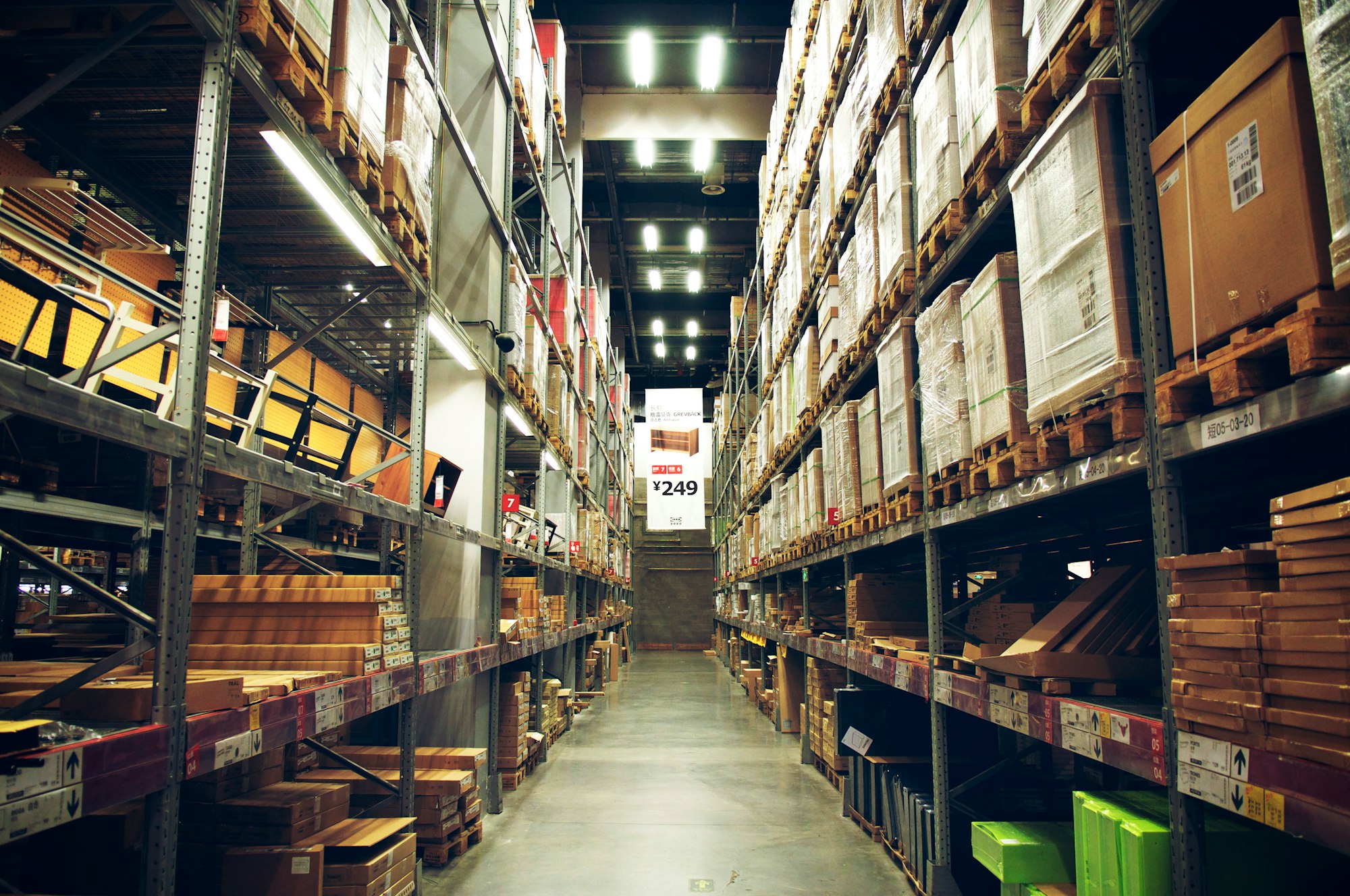A Step-by-Step Guide to Choosing an OMS
Choosing from among the wide range of technologies available to simplify the order fulfilment process can be a bit overwhelming. How do you choose the Order Management System (OMS) that will best address the needs of your business, both now and in the future?
This article is a step-by-step guide on choosing an OMS. We will look at the different features that might be essential to your business. We will also look at the costs and return on investment (ROI) of using an OMS.
In this way you will have the right tools to research and evaluate the different OMS options and set you on the path of finding the right OMS for your particular needs. In the end, you want an OMS that will simplify your operations, lower cost, increase profits, and ultimately make your customers happy. This guide will help you attain that aim.

Order Management Technologies
When you look at the current business tool landscape, there are several technologies available to simplify the order management process. The goal with these systems is to automate and simplify many of the manual and time-consuming tasks involved in processing orders:
- Inventory Management System (IMS). When you run an online store, it's important to automate your inventory management and running of warehouses. You have to keep track of your stock so that the system is able to tell customers if a product is in store, and how many items of that product are available for purchase. The IMS can then share this information with third-party logistics (3PL) partners.
- Electronic Data Exchange (EDI). When you contract the order fulfilment duties to a fulfilment provider, you will want to set up a system where you share electronic data with them. A common way of doing this is by using an EDI. The system keeps track of all electronic data that needs to be transferred between you and your partners and ensures that everyone has access to the same data. latest figures. Most fulfilment centres use an end-to-end EDI setup, so it’s important for your systems to network with them.
- Purchasing and Supplier Management System. This is a system that keeps track of your inventory and ordering. The system tells you when to replenish stock before it runs out and will also help you select the right suppliers. In this way, you will always have the right amount of stock on hand to meet customer demand.
- Point-of-Sale (POS). If you run physical stores, your point of sale system should integrate with your eCommerce platforms. In this way, you will have current inventory numbers available across both channels. It also makes it easier to track orders whether they originate from brick-and-mortar stores or online stores, since both can be managed from a single system.
- Shipping Solutions. This is useful if you do your order fulfilment in-house. The system will help you choose the best shipping option for each order—depending on the needs of the customer. The system could be directed to find either the cheapest or fastest shipping option for a specific order. The system will evaluate each order in a logical way and determine the best shipping option for each case.
- Analytics and Reporting Programs. Most retailers don't make the optimum decisions from the outset. Usually, some data needs to flow into the system first before it can be analysed. The fact is that systems and processes need to be optimised over time. When you use suitable analytics and reporting software, it will point out the adjustments you have to make to make your workflows more efficient.
What happens when you want to combine the capabilities of these different technologies in your business? Do you have to choose between the different systems? Or is it necessary to do the legwork of integrating different technologies in order for your business to run optimally?
Fortunately, you don’t have to choose between these technologies if you use an OMS. They were designed to combine many of these separate functions into a single platform. When all of these core functions are built into a single system, order processing becomes more efficient. Inventories from different sales channels are updated automatically. Some OMS packages even provide automatic accounting services, making your task of running a business so much simpler.

Factors to Consider when Deciding on an OMS
Here are a couple of factors you have to consider when deciding on an OMS:
- Cost. Compare the features and benefits to the price you have to pay for them. Often the featureset of a product increases as you sign up for higher user volumes.
- Shipping Options. Is the system able to route orders using your specific warehousing options and customer locations?
- Inventory Management. Will the system be able to update inventory levels across the sales channels and warehousing options you use?
- Customer Service. Will the system allow you to track orders for specific customers and also automatically update their information and accounts?
- Financial Services. Will the program assist you in offering returns and refunds?
- Level of Integration. Is the system able to sync your inventory, order, and customer data with your supply chain partners? How close is the integration across your sales channels, fulfilment partners, financial systems, and point-of-sale (POS) systems?
- Offline Services. Will the system accommodate Buy Online, Pick Up In Store (BOPIS) and Endless Aisle processes?
- Analytics and Reporting. What level of visibility does the system give into your various processes? Will it track performance and give you warning when problems arise?

Steps in Choosing an OMS
If you've considered all of the above factors, you are ready to choose the right OMS for your company. If you follow these clear and logical steps, you won't go far off target in choosing the most optimal setup for your needs:
1. List your Goals & Needs
Here you have to talk to all the stakeholders in your company and supply chain to figure out their needs. These would include:
- Your team and staff members
- All your suppliers
- Your distributors and 3PL partners
- Your customers
Talk to members of each group and find out what they would need in an OMS. What is working in the current system, and what would they like to improve? What would be the ideal OMS in their estimation? Identify the key features that are the most important to each group. This will help you to distinguish between “must-have” and “nice to have” features.

2. Write a Proposal
Now that you know what you are aiming for, draft a proposal document. Here it's important to describe in as much detail as possible the needs that your new OMS should fulfil. Be specific. Take into account your future order volumes, all the sales channels you would like to incorporate, as well as your plans for future expansion. Writing a document will clarify your thoughts. It also becomes a useful tool, since you can share it with the different OMS vendors for their input.
3. Research Vendors and Products
Now it's time to look at the current OMS market. What are the OMS products available and what are the features, benefits, and drawbacks of each? Which of the current vendors are able to meet your needs? After some research, you will be able to draw up a shortlist of vendors with appropriate solutions. Send your proposal document to these vendors and talk to them about your options. Ask them to motivate you why their products will be suited to fulfil your needs.

4. Evaluate Options & Choose the Right One
At this point, you should have enough information to list the different OMS offerings that could suit your needs and compare them with each other. Keep your company's particular needs in the front of your mind. Remember that you don't need all of the functionality that the different OMS packages offer. Which of those are absolutely essential for your current situation as well as your future plans? This should help you decide on the best OMS for your needs and budget.
5. Partner with the Vendor to Implement the OMS
Whatever OMS vendor you chose in the end, you need their help to make the roll-out of their system a success. The best vendors will assist and guide you through this process. Since most OMS packages are charged on a monthly basis, it's absolutely in their best interest for you to get the most value from their software. Make sure that you build a strong relationship with the vendor from the outset. The more they help you set up the system in the most efficient way for your operation, the more successful the software rollout is going to be.

How Much Does an OMS Cost?
The most basic OMS will cost only a few hundred dollars a month to implement. On the flip side, the basic system might not be able to provide all the automation options you need. The cheaper systems also put limitations on the number of sales channels you could register on the system, the number of warehouses you are able to use, as well as the number of products you can sell through the software.
When you go to more advanced systems, it will probably cost a couple of thousand dollars a month. Decide if this added expense is worth your while, taking account the added channel and warehousing options that it makes available to you. The more expensive systems allow you to register significantly more products on the system, run higher order volumes, offer more customization capabilities, and allow more enhanced automations.
If these features significantly improve your efficiency and profitability, they will end up paying for themselves. Try not to sacrifice added capacity and service to save a buck. It's counterproductive to invest in an inferior system that won't give you everything you need. It may seem cheaper now, but will end up stifling your growth. An ineffective system will only frustrate your staff, suppliers, and eventually your customers. So choose wisely.

Calculating the Return on Investment (ROI) for an OMS
Here it might be useful to compare the different OMS systems based on their ROI numbers. This will give you an objective measure to compare your options and make an informed decision. When calculating the ROI for an OMS, you have to take the following factors into account:
- Which manual tasks will the OMS eliminate, and how much employee time will the new software save?
- How much money will the business save by preventing processing errors?
- Since the OMS will take over many of the order processing tasks, what other productive work could your staff members do that will increase profitability?
- Are there any of your other software tools that can be replaced by this new OMS system?
Here it might be useful to look at an example. If you currently have one staff member processing orders, say the new OMS will cut their work time in half. From here it's easy to calculate the ROI by working out the money saved in their hourly wage. Simply multiply the time saved by their hourly wage. How much does that work out over a 12-month period? Are the savings greater than the added investment in the OMS package?

Conclusion
With so many options in the market, it might feel like an impossible task to choose the OMS platform that will serve all your needs while still keeping costs to reasonable levels. How do you decide on the OMS which will suit your business the best? Which features and factors are the most important to cater to your particular needs?
Take your time and evaluate your options carefully. An Order Management Solution is critical infrastructure that will shape the future of your business. If you choose the wrong system it will cause serious setbacks. You don’t want to start implementing an unsuitable system and only discover your error midstream.
If you follow this step-by-step guide, you will be well on your way to choose the perfect OMS for your setup. The right system will streamline your order fulfilment process and make your company more productive and profitable. And when you partner with the right vendor, you will get the OMS up and running in no time and get the most value from their product.